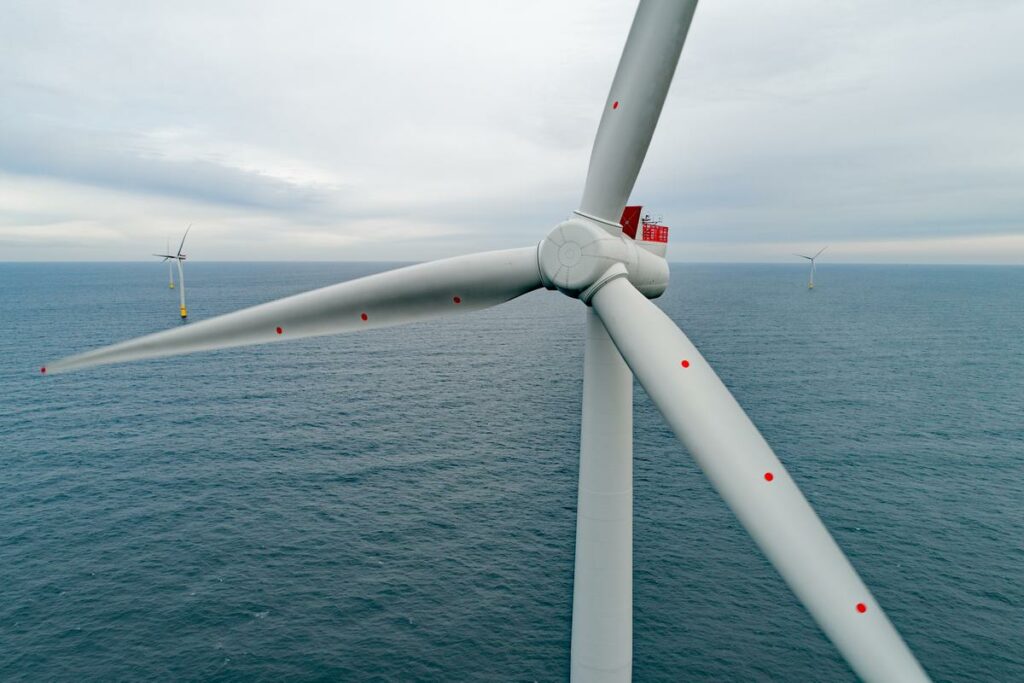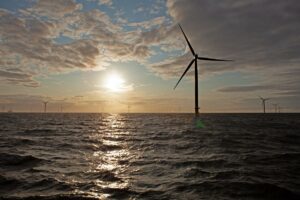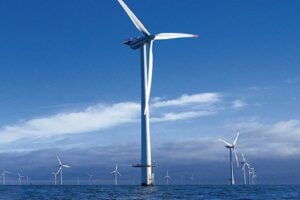An Environmentally Responsible Plan to Bring Clean Offshore Wind Energy to New Jersey (Sponsored Content)

By Richard Lawton, Executive Director, NJ Sustainable Business Council
Offshore wind farms in New Jersey will help power a cleaner, safer, and more reliable energy future than conventional power sources. Developing a statewide offshore transmission grid will enable New Jersey to reliably deliver thousands of megawatts of electricity from offshore wind farms, but construction and operation activities must maintain the health of our vital ocean and shoreline environments. Skillfully managing this nexus between economic development and environmental stewardship in ways that serve both interests is a core principle that unites all companies of the Sustainable Business Council.
When we see business plans and practices that exemplify this way of thinking, we like to hold them up as

examples that disprove any notion that we must choose between the economy and the environment in the transition to a more sustainable clean energy economy. For that reason, we want to highlight several features of the Coastal Wind Link proposal, a comprehensive offshore wind transmission solution put forth by PSEG and Ørsted. Environmental stewardship is a core principle of its design. This is particularly noteworthy now that Governor Phil Murphy has raised New Jersey’s offshore wind energy goal to 11,000 megawatts by 2040, which would result in offshore wind producing more than half of the state’s electricity.
Coastal Wind Link’s innovative design elements ensure the protection of New Jersey’s cherished oceans and shorelines. The Coastal Wind Link would combine commercially proven high voltage direct current (HVDC) with a meshed grid design. This unique approach would bring clean wind energy ashore with minimal ecological impacts. The project will enhance versatility and reliability by connecting New Jersey's offshore wind farms to several on-land interconnection points, allowing power to be seamlessly routed to areas of greatest demand in real time. This approach will not only help facilitate the expansion of offshore wind, it will also make it easier for New Jersey to integrate new and additional forms of renewable generation as the technology advances. Importantly, this is achieved with each of the grid’s interconnection points, avoiding New Jersey’s most sensitive and iconic locations: our recreational beachfronts.
Onshore, the project’s cable landfalls will be installed using trenchless technology to the extent possible, reducing impacts to nearby freshwater and coastal wetlands and shorefront areas by reducing ground  and habitat disturbance. Coastal Wind Link has a short onshore cable route aligned within existing road rights-of-way using trenchless technology, further avoiding the need for tree clearing and minimizing impacts to wildlife. Moreover, the project does not intend to use any of New Jersey’s critical Green Acres sites. It also includes the redevelopment of a brownfield site, the former Sewaren power plant, which will infuse new life, vitality and purpose into an otherwise underutilized property.
and habitat disturbance. Coastal Wind Link has a short onshore cable route aligned within existing road rights-of-way using trenchless technology, further avoiding the need for tree clearing and minimizing impacts to wildlife. Moreover, the project does not intend to use any of New Jersey’s critical Green Acres sites. It also includes the redevelopment of a brownfield site, the former Sewaren power plant, which will infuse new life, vitality and purpose into an otherwise underutilized property.
Offshore, Coastal Wind Link uses efficient HVDC transmission cables, which minimize habitat and seabed disturbances compared to an HVAC design. The specific placement of the offshore cable system limits the impact on local fisheries, avoids operational conflicts with commercial fishing and shipping operations and avoids artificial reefs and nursery areas. In addition, construction activities will be timed to avoid impacts on endangered species, such as the North Atlantic Right Whale, which migrates along the Jersey shore each year.
New Jersey is the first state in the nation to use a statewide approach for offshore wind transmission development. We are impressed with these features of the Coastal Wind Link proposal and its intention to have the lightest possible environmental footprint, assuring that the Governor’s vision for offshore wind energy is a winning – and truly clean – investment for New Jersey.
This is sponsored content from PSE&G






I wonder how much the writer of this article, Richard Lawton, Executive Director, NJ Sustainable Business Council, got paid/paid off by PSE&G and Orsted (the wind turbine producer) to promote this socialist garbage propaganda. Just the mere advertising by Tellurian, a natural gas company, shows that ONLY 12% of all power will be provided by wind energy. Just ask the Germans, who went full "green" energy with wind turbines, and are now stuck with NOT enough energy for the winter, after the Russians cut them off from the NordStream Pipelines #1 and #2. The pipelines provide Germany with more than 70% of their energy, and they won't have any come winter time. It is interesting to note that PSE&G and JCP&L can't even maintain energy during a major coastal storm. What's going to happen to the wind turbines in large hurricane force winds and high waves??? Don't they shut down the wind turbines during these extreme weather conditions, so as not to destroy them???? This entire wind energy debacle is another grand "Green Raw Deal" farce for extortion by politicians and corporate elitists to line their pockets with ever more hard-working taxpayers' money. New Jerseyans should demand to know exactly how much energy will be provided, and not be given some "pie-in-the-sky" numbers by Governor Phil "KNUCKLEHEAD" Murphy ( who is gone in 2-plus years and will go back to his home state of Massachusetts or run for President, and say "Screw New Jersey").